Only Conservatism Can Save the Poor Black Community
Baltimore
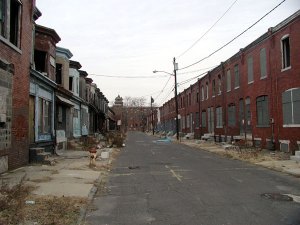 A Baltimore ghetto.
A Baltimore ghetto.I walk the streets of Baltimore on a sunny Monday afternoon, taking in the draught of two worlds violently enmeshed together in this city of simultaneous, and often paradoxical, eminence and decay. Only one look upwards at the old steeples and pastel rowhouses reminds me of the city’s richness, the city of Poe and Fitzgerald and the newly beautified Ta-Nehisi Coates, whose 2015 book Between the World and Me launched him into the upper echelon of Black American voices. It is this man who I’m thinking of when I look down at the cracked roads, at the Black nomads dragging their things down the crumbling sidewalks with blank looks starved on their faces.
“One cannot, at once, claim to be superhuman and then plead mortal error,” Coates writes in his bestseller. “I propose to take our countrymen’s claims of American exceptionalism seriously, which is to say I propose subjecting our country to an exceptional moral standard.”
Judging by his exceptional moral standard, judging by the grand churches that line the skyline of Inner Baltimore, and then seeing the paralyzed Black folk on these city streets, I can see why many have come to conclude that the American ideal has failed her most vulnerable citizens. For all our talk of our specialness, our cocky confidence in ourselves, many of the poor Black people in the Baltimore streets have seen more bark than bite.
Ta-Nehisi Coates and I may be on opposite ends of the ideological spectrum, but where we do agree: the Black body has been in a consistent state of violation since it was supposedly set free. But who to blame? So many choices. Coates, in his Case for Reparations article for The Atlantic, puts it on the shoulders of the institutions benefiting White society for the past 200 years, the government, the churches, the community norms that strangled the Black populace so cruelly since slavery. “America begins in Black plunder and White democracy,” he writes, his bitter snarl firmly etched onto the page, as evidently pronounced as the words themselves. It is in this reading of history where he pronounces reparations as the only solution to the Black community. It is this reading of history that modern conservatism, as it has sometimes failed to do, must at least acknowledge – mere ignorance or dodging of the issues is not what the Black race deserves. They deserve action.
We owe the Black community reparations. But modern liberalism has all too often translated those reparations into a lump sum of money, or masochistic self-guilt that in reality functions only as lip service and does nothing to address the issues today in the heavily concentrated ghettos of places like Baltimore. This reading of reparations not even Coates defends: “Reparations—by which I mean the full acceptance of our collective biography and its consequences—is the price we must pay to see ourselves squarely,” he says, denying that it means, specifically, welfare, or entitlements, or things that the liberal narrative would seek to push forward. In reality, the Black community deserves better than that. It deserves a return to conservatism.
Smithville
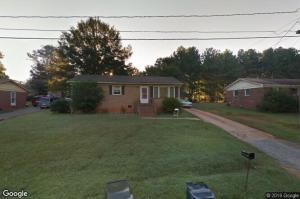 A house in the Smithville neighborhood. Credit: Google
A house in the Smithville neighborhood. Credit: Google25 minutes north of Charlotte, NC, I walk the weed-ingrown streets of Smithville, a predominantly Black small town nestled between two White communities like a sunspot. I’m joined by a committee of friends, all who’ve devoted tens of hours here for one purpose and one purpose only: to hear and retain the voices of the whole neighborhood. And to fight on its behalf.
Smithville would be considered a middle-class neighborhood, with the majority of the adults interviewed either working or retired. The houses are not large, the lawns unkempt, but you go around and ask everyone what they think of their community, and the response is immediate and enthusiastic – they love it. Why? The answer I get over and over and over again: the people here are like family. Everyone knows each other. They hold themselves in community accountability. And I realize that this community is rich beyond richness. Not because they are materially rich, but because they love each other, they treat each other like brothers and sisters in Christ. Compared to the national divorce rate, Smithville’s is extremely low. Kids are normally raised in two-parent homes, and neighbors help each other. It is in many ways an idyllic vision for the Black community today.
Today, 72 percent of Black babies are born out-of-wedlock. Coates points out that that is perhaps due to married women having less kids, but I’m not focused on the parents. I’m focused on the kids. Hundreds of studies have only confirmed what I can only emphasize again and again, to the chagrin of some liberals everywhere: two-parent homes with a mother and a present father are the single best structure to raise children, and every other structure is deficient. I will cite and cite and cite until this becomes as clear as the back of our hands. When liberals hear the word “family,” they think some grave preacher telling them what do with their sex lives. When poor Blacks think “family,” they think of one of the few opportunities they have to move up the social ladder into middle-class stability. Marriage among Black people is a minority within a minority, but it is a privileged one at that – one that needs to be expanded and encouraged by our governments and social institutions.
Smithville has a lot of problems, but it has the one thing it needs to get right, right – family is the essential value here. The two-parent family – a fundamentally conservative ideal – needs to be at the center and forefront of any discussion of social mobility and well-being for the Black community.
Charlotte, New Orleans
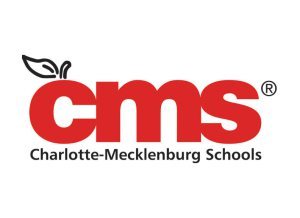 The logo of one of the most polarizing school districts in the nation.
The logo of one of the most polarizing school districts in the nation.
A story of two cites. Charlotte is a city that I lived in the entirety of my summer, one with which I am imminently familiar. New Orleans is a city in which I’ve never been.
Charlotte-Mecklenburg Schools is the 2nd largest public school district in the entire nation. 135,600 students roam its halls, many oblivious to the fact that it was at the center of massive national controversy in the 70s over integration and forced busing. In the landmark Swann v. Charlotte-Mecklenburg Schools case, the Supreme Court held that forced busing was an appropriate way to solve for the need to integrate the city’s schools. CMS caught on surprisingly quickly, busing Black kids in White neighborhoods and White kids into Black neighborhoods as a regular feature of its public education through the 80s. Through this experiment in racial integration, CMS rose near the top of many educational standards such as test scores and class equality. Black students overachieved their educational goals by a significant margin during this time period.
One might think this is a clear victory for the liberals. But there’s only one problem: everyone hated it. And by everyone I do mean everyone. The White folk didn’t like it, the Black folk didn’t like it, the business folk didn’t like it; no one liked it. As Newsweek’s Sam Fulwood III writes, “Unpopular court orders led to busing plans for school desegregation” that undermined “neighborhood schools” and made “Black kids like me [bear] the brunt of long bus rides across the county.” Even today, both White and Black mothers largely refuse to support forced integration efforts like what happened in CMS, before the 2000 ruling that relaxing those restrictions on busing.
What this tension and controversy over CMS reveals today is twofold: one, that Black students benefit from going to mixed-race schools with strong educational credibility (which should never be a surprise, to liberals or conservatives), and that forced integration is a pretty awful way to achieve that goal.
Enter New Orleans.
When Katrina devastated the New Orleans’ landscape back in 2005, it brought with it a silver lining – an opportunity to completely flip the script on New Orleans’ failing public schools (90 percent Black, 70 percent free/reduced lunch). In the aftermath of the city’s flooded and completely useless school buildings, the city council voted to do more than just rebuild the buildings with the same old tired model that was failing their Black citizens. They built a completely new model of education based on the free market principles of charter schools, local autonomy, and school choice.
Schools that were all normally run under the ballooning, overextended Orleans Parish School Board were now assigned to local organizations. Charter schools moved in, scooped up the worst performing schools, and became the primary source of education within the New Orleans community. Attendance zones were eliminated, meaning that as long as the school had capacity, any student from within the Orleans Parish could attend any other school in the city. It was a true free market revolution in education based on conservative principles of choice and private sector development.
Five years after the conservative reforms were enacted, student performance in this heavily Black district has increased dramatically. In 2005, 64 percent of New Orleans schools were deemed “academically unacceptable.” In 2009, in just four years, the number had dropped to 42 percent. Test scores have gone up dramatically in both the 4th grade and the 8th grade LEAP tests since the enactment of these reforms. Pushing local autonomy in schools has led to an upsurge in educational innovation. And school choice – the creation of charter schools to compete with the public schools, and the ability for parents to choose within a marketplace of schools in which they could send their child (without being forced to, as CMS busing made sure) – has fostered Black gains like no other.
Robert Garda Jr., New Orleans College of Law, writes:
“Before Katrina, only thirty-two percent of African-American students scored basic or above on state exams, which was well below the state average. Now, fifty eight percent score basic or above, which exceeds the state average for African-Americans. In fact, black students in New Orleans are outperforming their counterparts in other parts of the state for the first time.”
Conservatives have always embraced charter schools. Now, with the well-being of the Black community at stake, we have to embrace them even more and launch an education revolution in every city, based in choice rather than force, based in local autonomy rather than the bloated empires of education like CMS. When Black parents are given the autonomy to choose their schools, the ones that desire better schooling for their sons and daughters now have that option – at least in New Orleans. When schools are given the autonomy to have their own hiring practices, they can innovate and make the lives of its students better. And if they don’t? Then the free market kicks them out. It’s how education should work.
Richmond
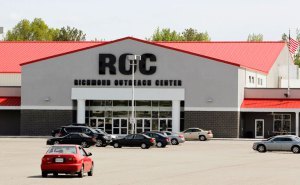 Richmond Outreach Center exterior.
Richmond Outreach Center exterior.I lived in Richmond, VA for a large part of the first 15 years of my life. In my 13th year, I went on a 30-hour fast with my church, which including partnering with a large inner-city church called The Richmond Outreach Center (The ROC) to serve the neglected Black community. I loaded into the church bus and took a trip downtown, into a poor neighborhood in the middle of downtown. I knocked on the doors and saw the joyful eyes of the young children who immediately pounced on me, ready to play with me and worship God back at The ROC. With us, they got in their daily exercise, so they got hungry. In hour 27 of my 30 hour fast, I was assigned to make them free sandwiches for lunch. Boy, did I want to eat them myself. But I remembered that each of these would go to someone who maybe didn’t have anything to eat over dinnertime. That day, I began to understand churches as more than just vessels to lift up prayers to God. To these people, they were second homes. Sometimes even first homes.
70 percent of Black women and 57 percent of Black men attend church at least once a month. Christianity is, and has always been, the source, the vitality, and the strength of the Black community. It is the nerve center of social life, the harbinger of moral values, and the respite for those in tough situations. Even James Baldwin, who had a radical relationship with his Pentecostalism, made his hometown church the thematic center and primary setting of his seminal coming-of-age novel Go Tell it on the Mountain. Baldwin understood that the Christian church and Black society are inextricably linked.
It is here where my bromance with Ta-Nehisi Coates must unfortunately break. When he came to speak at Davidson College (my college), and then hold a private Q&A for English majors, I snuck in unsolicited and asked him this question:
“The Black literary canon is made up almost universally of writers who have a deep experience with the Christian faith. Toni Morrison, Zora Neal Hurston, James Baldwin, come to mind. You are an atheist without much of a relationship with the church. How can you claim to accurately portray the Black experience without such a critical facet?”
His answer was a long-winded way of saying: “Richard Wright was an atheist too.” In any case, it was hardly satisfactory.
Coates doesn’t understand the hope, joy, and social support that Christianity brings to Black folk. Hopefully our nation knows better.
Unfortunately, in the past 30 or so years, it has become apparent that our nation doesn’t know better. First of all, in the liberal mythos of the “Black church.” Liberals believe that Black churches are homogeneous entities that work and vote as a group, when in reality, Black churches are heavily decentralized, locally grown, and fiercely independent. Barbara Savage, Professor of History at UPenn, argues: “Black churches, like their other American Protestant counterparts, are among the most local, the most decentralized, and the most idiosyncratic of all social organizations. ” Sure, there are Black churches one would deem “progressive.” But the majority of Black churches are very traditional – even more than White churches – in questions of ethics and morals – and the movement is only growing. The liberal misstep is in taking for granted the social values of an increasingly Evangelical, increasingly conservative bloc of the Black churches by pushing a radical social agenda that has alienated Black pastors and infringed upon the values held by their congregations. Look at HB2, which galvanized the support of Black pastors, who were passed over in the national conversation. Look at the battles over religious liberty in workplace waged by Obama, often at the behest of his Black constituency. Liberalism uses Black votes to pass laws antithetical to many long-held Black values.
Our government policies should instead serve to protect the religious liberty of these independent-minded churches that form the foundation of Black society. In a community so rich, so steeped in the Christian tradition, trust in the church comes way before trust in the government. Any unilateral government attempt to dictate to these churches what marriage means to them, or what religious ethics means to them, or what gender means to them, will backfire quickly. The Black community, with its trust in the government already shaken, will not take an assault on their churches very lightly.
Trenton
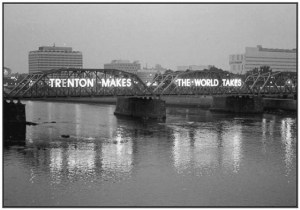 Bridge over troubled water. Credit: what-when-how.com
Bridge over troubled water. Credit: what-when-how.comAs I meander along I-95 in my 2014 Chevy Cruze, I pass by Trenton, New Jersey, a sobering reminder of what Black America could be and isn’t. Perhaps the most stark example of this dissonance is a steel bridge over the Delaware River that leads into the city proper, a once proud bridge furbished in 1935 with these words plastered on its exterior:
TRENTON MAKES THE WORLD TAKES
One can’t help but exhale as this rusty bridge stands in need of all kinds of cosmetic upheaval, the kind that one of the most banged-up cities in America can’t afford to give. The last time I went into the city proper, I served at a soup kitchen called TASK (Trenton Area Soup Kitchen) and while the experience was enlightening, it was also saddening, to see all these old Black folk in a rotting inner city core with seemingly no place to go but here, on food stamps and government welfare, for their daily meals.
For the Black community, this vicious cycle of poverty is exacerbated by a government safety net designed, intentionally or unintentionally, to keep and trap poor Blacks within its payroll. Welfare today is structured in such a way that disincentives marriage, disincentives getting a low-paying job, and disincentives getting out of it. Before LBJ’s “War on Poverty” through massive government spending on welfare, about two-thirds of the bottom 20 percent in income of the population had a job. Today, only one-third has a job. In the heavily Black inner cities, even fewer do. Considering the majority of bottom-level earners are Black people (and possibly Hispanics), we can say with certainty that the Welfare State has failed the Black inner cities. Liberal economic ethics, as it did with the New Deal, as it did with the Great Society, and now as it does today, has failed the Black inner cities.
But this has long been old news – we have long known that liberal social programs hurt the very people they try to protect. The real question is: is conservative policy any better?
Well… yes.
In 1995, The Harvard Business Review’s Michael E. Porter published a seminal article called “The Competitive Advantage of the Inner City” with the founding observation that urban revitalization (especially for poor Black communities) is inexorably linked to the proliferation of inner-city jobs. The conservative argument is very simple: Jobs change things. Government safety nets – don’t. Therefore, the focus of government funding should go not into welfare and entitlements but job-creating initiatives in the inner cities, which provide the stable family incomes non-dependent on government funding.
Porter contrasts the “Old Model” based on government safety nets, low emphasis on business development, and redistribution of wealth with the “New Model,” based on attracting profitable, job-creating businesses specialized in specific industries, engagement of experienced and skilled minorities to come in and work in the inner cities, and integration of the private sector with the needs of the local Black community. He points to Boston, which, even as a liberal bastion, implemented these conservative reforms and grew its inner city economic sector to the point where the urban populace had about as much spending power as its suburban counterparts.
And remember that this article was published in 1995. Since then, Porter’s New Model has worked wonders for urban planners interacting with these heavily Black inner cities. We can look to inner city revitalizations in Houston, L.A., and Brooklyn in recent years as the most striking of many great examples. All were transformed from nearly unlivable into thriving places for Black communities based on free-market reforms and strong commitments to the private sector – conservative principles that are at the heart of any successful economic plan.
Unfortunately, Trenton’s outdated reliance on government (20,000 state workers flood in every day from the suburbs) has led to a far different fate for the city’s Black population, one that continues to foster dependence and regressive thinking in an age where that simply cannot happen. Until it changes, expect ever-longer lines of discouraged Black folk at soup kitchens all over the city.
Black Lives Matter
I’m in a darkened room at a Christian camp in New York, filled with Black boys and girls who could only come on this weeklong trip thanks to the generosity of anonymous donors. The preacher is preaching the Gospel to these new friends of mine, preaching grace and love and things they may have never even heard of in their broken families, in their broken social conditions. My White friend and room leader of some of these girls told me one of these girls had been sexually assaulted as a kid. Another has lived without a father. Another has an abusive boyfriend. So when the preacher gave the altar call, you could see the awe in these Black bodies’ eyes. You could see their desperation, but in that desperation, you could see flickers of hope rise up within them. Some of them began to cry as they babbled about Jesus, about His coming, about His salvation. That night so many of them entrusted their lives to the Lord, I couldn’t believe it. It was a miracle.
Today, many of those same Black youth I met and befriended at camp still feel like they need a miracle. They’ve been forced into a system that tells them they have no control over their lives. They feel powerless. And you can only go through a conversion experience once.
Powerlessness is the central struggle of the modern Black person today. For so long, America’s liberal government has failed to treat Black people as autonomous humans. Modern liberalism’s cornerstone is the wretched belief that Black people have no control, that they can’t take of themselves, that their institutions and principles are somehow weaker than that of the government. Therefore, they need to be nursed in welfare, nursed in entitlements, nursed in schooling, nursed in values.
All this “nursing” is really creating a trap whereby the Black body loses his autonomy to function outside the government due to his dependency on it. The irony is that even as liberalism embraces the chant: “Black Lives Matter!” its policies and principles are anything but faithful to it.
One of my friends works at a summer enrichment program that serves mostly underprivileged Black kids. She tells me about that time the supervisor, a graduate from my college, sought to educate these kids about their status as oppressed victims rather than as autonomous moral agents. She tells me about the bitterness towards White people, and White culture, propagated at that school. She tells me about how the kids are left to believe in one thing – that they are still slaves. Out of all the things I heard from that school, this one was the one that made me most sick.
Modern liberalism has become a Molotov cocktail of constricting Black communities into government dependency, and then teaching them that dependency is all there is.
I believe Black lives deserve better.
They deserve a nation that will support, rather than discourage, Black upward mobility and healthy children through the institution of marriage and family.
They deserve a nation that will give them the freedom to choose where to send their kids to school, a freedom entrusted by the free market, rather than the government.
They deserve a nation that respects their most cherished churches, that does not attempt to infringe upon the values of what they hold to be the most important institution and source of strength in their lives.
They deserve a nation that treats them with dignity by giving them opportunities to contribute to the national labor force, rather than buries them in a cycle of government handouts.
Most of all, they deserve to be told that even while structural imbalances persist, that they are still moral agents whose decisions will define not only them but the trajectory of their race. Victim thinking gets us nowhere. Only the thinking of a fully realized autonomous agent can bring about change. And only a commitment to conservatism can truly turn a poor Black man in a Chicago ghetto into someone with the financial, intellectual, and moral independence to rise above his chains and embody the potential of his race.
I know some will accuse me of having a “White Savior” complex. (Even though I am not White.) To this I say: conservatism has never been popular with Black folk. I admit it. I’d describe conservatism as a Dark Knight of the Black community: a silent guardian, a watchful protector, an ideology that works even as it is reviled and shamed. But the evidence is there. I’ll trade White Savior barbs for real impact any day.
Even though only conservatism can save the Black community, it doesn’t mean it will. No ideology can totally plow through all the problems of an entire race, but only one can give that race the full and total freedom to become who it wants to be. Indeed, if conservatism is followed through, the burden is now on the Black community to exercise that freedom to make the right choices, choices that will define their posterity. But I believe in them, like I believe in Baltimore, Smithville, Charlotte, New Orleans, Richmond, and Trenton. I believe in them like I believe God himself has endowed us all with a ceaseless human spirit that dare not be tempered by government and regressive thinking. It is that belief in the human spirit that has led me to conservatism in the first place.
https://www.facebook.com/thekennethxu/
Twitter: @kennymxu
With thanks to Sam Weaver, Davidson College Class of 2019, for his contributions and editing. Check out his blog here: radicalcapitalist.wordpress.com



